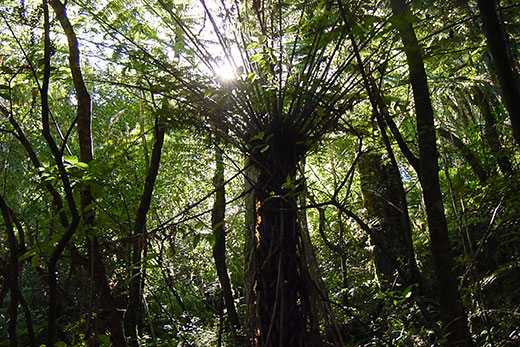Now the dust appears to have settled on the latest spat over 1080, perhaps it's time to take a deep breath and have a dispassionate review of the facts.
Although dispassionate and 1080 don't seem to be terms that sit together comfortably in New Zealand.
The argument over 1080 is largely one of perceptions.
Originally, 1080 was developed as a weapon in chemical warfare.
It proved so effective both the Russians and Americans would probably have been quietly pleased had it emerged from their basements, but neither had a hand in its development.
It was all done by plants, as part of their arsenal in their ongoing battle with browsing animals. This means 1080, or sodium fluoroacetate as it's more properly known, is a natural product that occurs in many species of plants, including the tea in your humble cuppa.
Initial development began many millions of years ago, with the advent of browsing animals – and, as is the nature of ongoing conflicts, resulted in an arms race. Animals evolved tolerance and plants developed higher levels and more potent forms of 1080 and so on.
Stuart Smith, an old friend who's in charge of the 1080 baiting programme in Australia's Northern Territory, told me in some cases this resulted in animals with extreme tolerance.
For example, in north-west Australia, where the battle has probably raged for longer than anywhere else in the world, native animals such as possums have built such an immunity it's almost impossible to kill them with 1080 baits.
This is fortunate for the north-west Australian ecosystem, because the Northern Territory and West Australia rely heavily on 1080 to control feral dogs, cats and rabbits.
Oddly, New Zealand is in a very similar position – but for a very different reason.
While north-west Australia has hundreds of native animals highly tolerant to 1080, there are no native terrestrial animals – apart from a couple of bats – in NZ to be poisoned. So both jurisdictions can use 1080 without threatening native fauna.
But the downside of not having native animals is most NZ plants have failed to develop defences, including significant concentrations of 1080, during their 80 million years of isolated evolution.
This left them at a serious disadvantage when browsers, such as possums and deer, arrived.
Giving the New Zealand bush a hand by artificially-introducing an effective natural defence developed by plants in other places seems only fair. After all, we created the problem. The only bright spot is we didn't introduce possums from north-west Australia.
Similarly, native birds and reptiles have no natural defence against introduced carnivores; and without human intervention a huge percentage are doomed to extinction in the very near future.
Carnivores don't naturally come in contact with 1080 and consequently have a very low tolerance to it, which makes it an ideal way to control them – it's just a matter of presenting a bait they will take.
Of course there is collateral damage, friendly fire, in the modern idiom. A few native birds are killed, but the number is insignificant compared with the kill rate of introduced predators and the dramatic increase in chick survival, which about 40 per cent higher for many, including kiwi chicks in areas where 1080 has been used.
Pets are also killed – dogs in particular are very susceptible – which leads to personal tragedies. But these pale when viewed beside the catastrophe we have unleashed on our environment.
Many more pets die from car-strike, but then it's generally regarded as the owner's fault because animals have no place on the road. The same applies to the New Zealand bush.
The point often made against 1080 is its perceived impact on the environment, but natural products don't tend to evolve very far if they are deleterious to their environment.
Successful ones tend to be tightly-targeted and usually break down quickly once they've served their purpose.
In 1080's case it breaks down into its component molecules very quickly in water. This means it has no impact on waterways, lakes or seas. Nor will it accumulate on the forest floor or in the soil, because moisture breaks it down.
Even sub-lethal doses ingested by animals will break down and be excreted within 10 days, so there's no risk it can accumulate in the food chain.
The argument over 1080 is largely one of perceptions – it's a poison, and therefore bad.
But the reality is the native flora and fauna of this country has been put at very serious risk by our activities and introductions, and we owe it to our environment – or if that doesn't strike a chord: we owe it to our future generations – to do our utmost to restore some sort of balance.
If that can be done with a compound, which evolved naturally as a defence against some of the very pests we're trying to control, all the better. After all, 1080 is as natural to New Zealand as possums, rats, stoats, cats and rabbits.
It is sad animals die in pain, but as they have no natural enemies – cars and hunters don't count – they're doomed to a far more lingering death from disease or starvation. Nature is cruel.



0 comments
Leave a Comment
You must be logged in to make a comment.